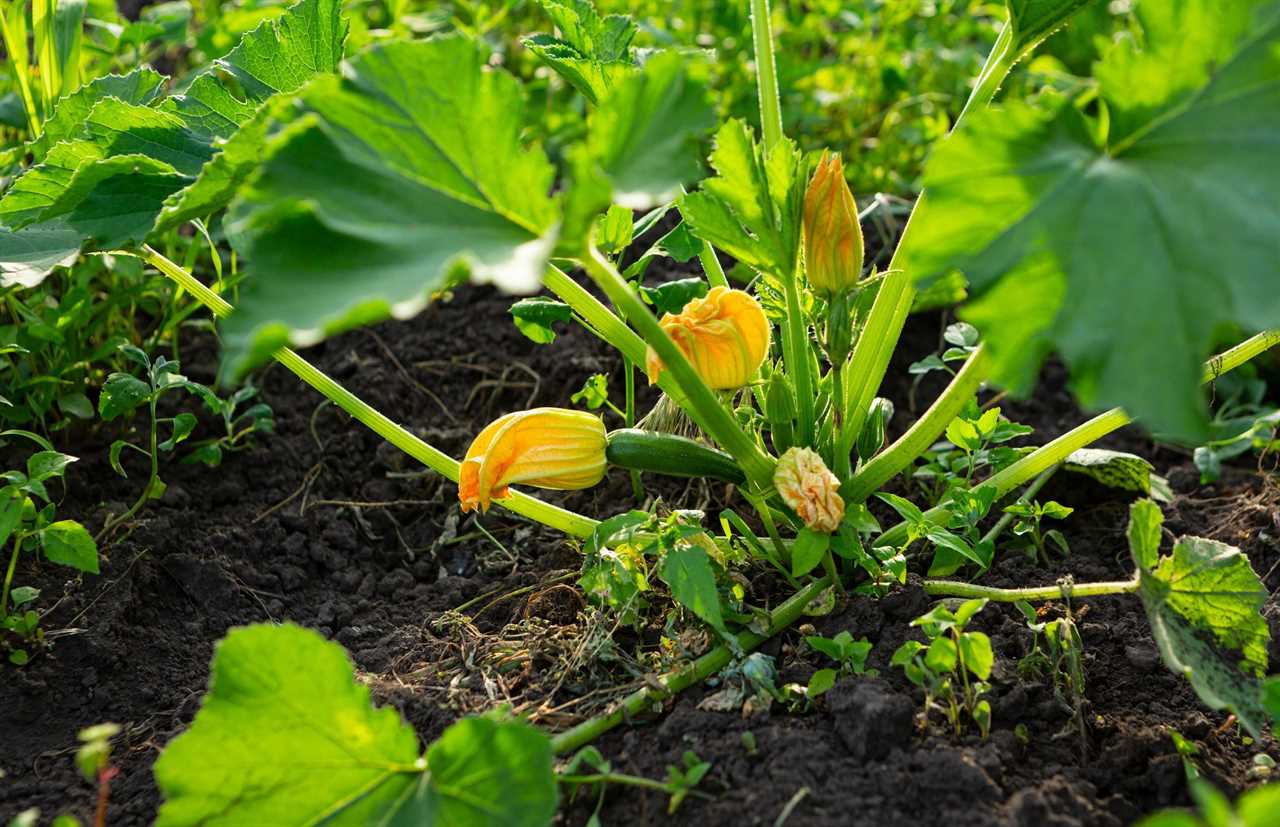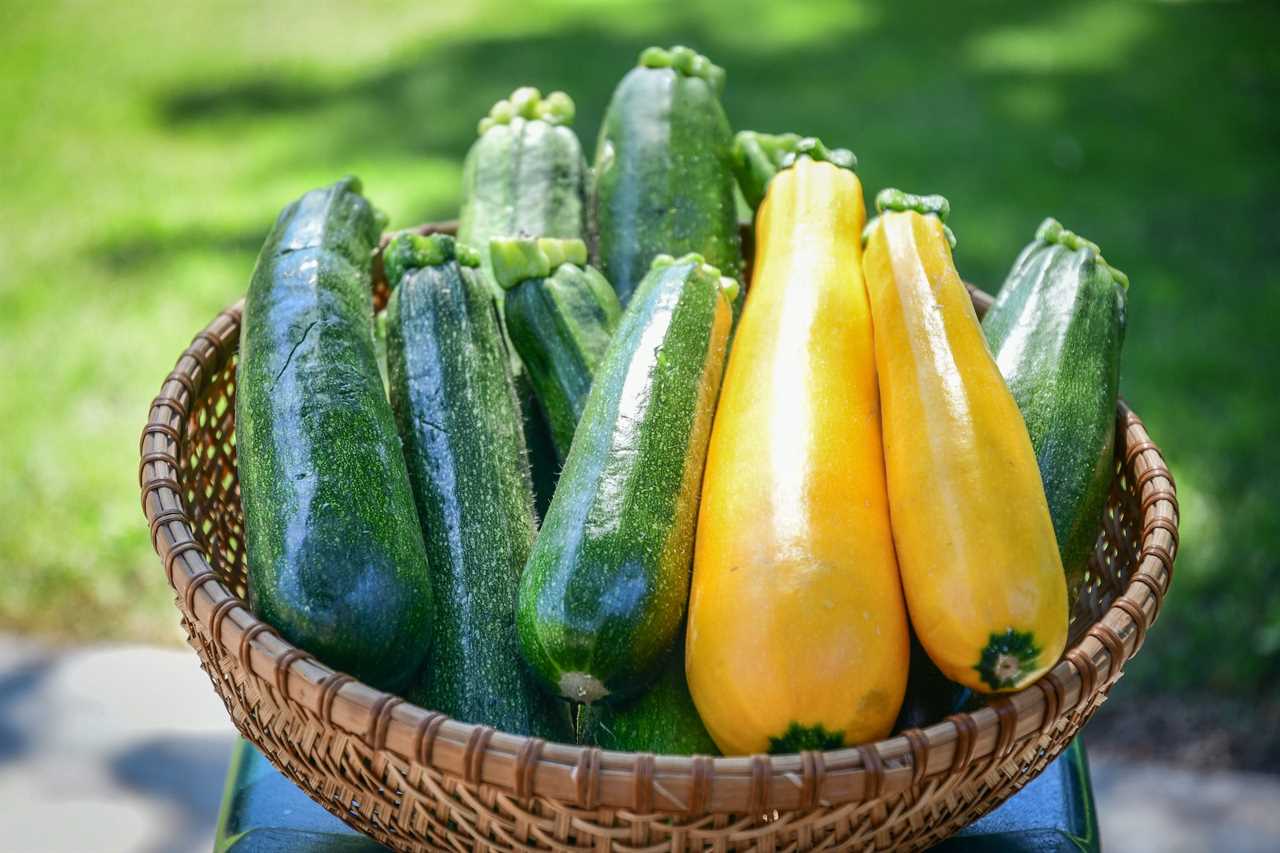I inherited a small cookbook from my mom with just zucchini squash recipes. It comes in handy on those summer days when my kitchen counter is covered with zucchini and other summer squashes I’ve picked from my garden.
Why do I end up with so much summer squash? Because every spring I forget how easy it is to grow squash, and how much one plant can produce.
Types of Squash
There are two main types of squash you can grow in most home vegetable gardens.
Summer squash
These include the classic dark green zucchini squash, yellow crookneck squash and many other varieties. The skin on summer squash is soft, edible and doesn’t store well. Pick and eat!
Winter squash
These include butternut, acorn and spaghetti squashes. All have tough, hard skins and are harvested later in the season. Store and eat throughout the winter.
How To Plant Squash
Squash can be grown from seeds sown directly in the garden, or as purchased or homegrown seedlings. Wait until your garden is frost-free before planting.
- Choose a sunny location with well-drained soil.
- Add compost to enrich the soil before planting. You can also add fertilizer, especially if a soil test indicated yours lacks nitrogen, phosphorus or potassium, the three key nutrients in most fertilizers.
- Make little mounds of soil where you want to plant the squash. These ensure good drainage around the plant.
- If growing from seeds, sow four or five seeds a few inches apart. Once seedlings emerge, carefully remove extra seedlings, leaving two to continue growing.
- If planting transplants, plant two seedlings a few inches apart.
- Space each hill three to six feet apart, depending on the variety. Check the seed packet or plant label for specific spacing information.
- Water the seeds or seedlings.
How To Grow and Care for Squash
Watering
Squash grows best with at least one inch of rain a week. Water when you don’t get enough rain.
Because of their large leaves, squash plants will transpire a lot of water throughout the day, so by evening their leaves look wilted. Overnight the leaves will draw up water from the ground and look normal again. If squash plants are still wilted in the morning, plan to water.
Weeding
Because of the large leaves shading the ground, weeds aren’t usually a big problem around squash. Remove any weeds that do try to grow.
Fertilizing
If growing squash plants in a garden with compost added, you may not need more fertilizer. If growing plants in large containers, apply fertilizer regularly.
How To Treat Common Problems of Squash Plants

Paying careful attention helps you spot problems early and take care of them without resorting to pesticides.
Insects
The most common insect pests for squash are squash bugs and squash vine borers.
- Check for insect eggs on the underside of leaves. They look like bronze-colored dots. If you see them, scrape them off.
- Watch for one stem that wilts while the rest of the plant looks fine. It’s likely one stem has a squash vine borer in it. Cut off that stem and dispose of it. The rest of the plant should be fine.
- Cover the squash plants with a floating row cover if you know these pests are a problem in your garden. Be sure to remove the row cover once the plants are in flower so bees can pollinate them.
- Plant squash in different areas of the garden each year. These insects overwinter where you grew squash the previous year.
Diseases
Occasionally, squash plants will be infected with powdery mildew, which shows up as white patches on the leaves. In most cases, powdery mildew won’t kill the plant but may reduce the amount of squash it produces. To prevent powdery mildew, space plants as recommended, grow in full sun and rotate squash to different parts of the garden each year.
Squash not forming
Squash plants have separate male and female flowers, and bees are the go-betweens to make sure female flowers are pollinated. If you notice the small squashes at the base of the female flowers aren’t growing, it’s likely because the flowers weren’t pollinated. Encourage bees in your garden by planting flowers that attract them, such as zinnias and sunflowers.
How To Harvest Squash

Summer squash
Harvest summer squash when it’s two to eight inches long. Harvest every few days. Use a sharp knife to cut the squash off to avoid damaging the rest of the plant. Remove overgrown squash even if you aren’t going to eat it.
Winter squash
Harvest winter squash when the outer skin is so hard you can’t penetrate it with your fingernail. It can be eaten when harvested.
If you plan to store it to eat later, leave at least an inch of the stem on the squash, wipe it down, then put it in a warm location for 10 to 14 days to cure. This allows the stem end to heal over so it isn’t as likely to rot in storage. Store winter squashes in a cool, dry location (50 F to 55 F) until you’re ready to eat them. Check the seed packet for more specific storage instructions.
Did you miss our previous article...
https://rsssuperfeeds.com/life-hacks/before-and-after-photos-of-musician-darius-ruckers-historic-home-restoration






